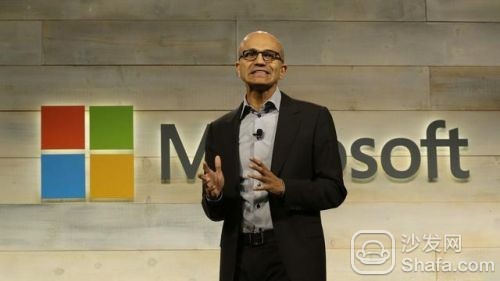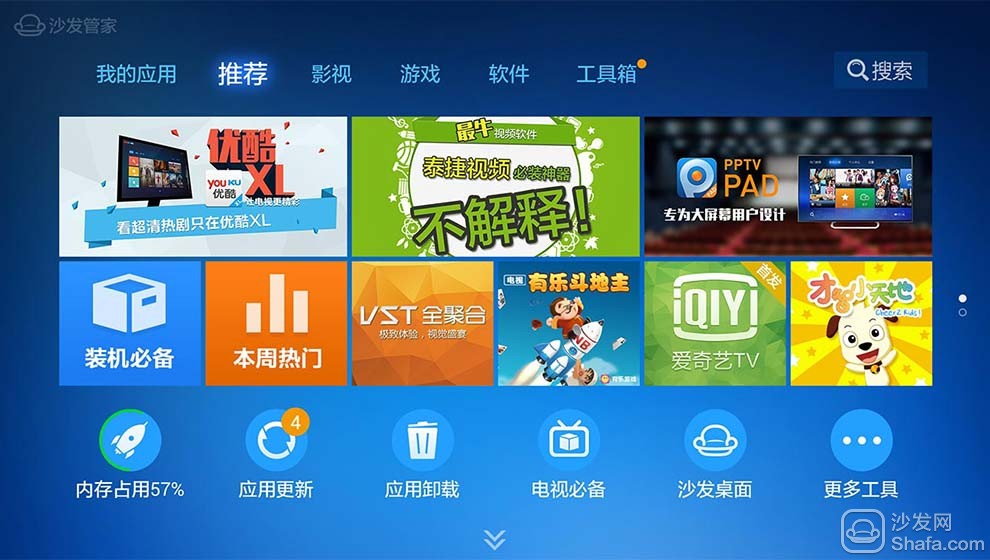
All along, Microsoft's fate and Windows are closely intertwined and closely related, but this upgrade next year shoulders an unusually heavy responsibility, just as it did in 2009 when it upgraded to Windows 7.
The mission of Windows 10 is to repair the damage caused by Windows 8. It is no exaggeration to say that if Microsoft botched Windows 10 this time, the consequences would be disastrous.
Of course, there are still countless large and small companies around the world, and they are still using Microsoft's PC and server software, which has brought the company money. However, many of these company's computers do not have the latest version of Windows installed, and some even use very old versions. For this phenomenon, Windows 10 will not have an immediate effect.
However, in the long run, the continuous launch of two flawed versions of Windows will have extremely negative consequences. Until now, some companies have just adopted Windows 7 (mainly because of the retirement of Windows XP), and there is no doubt that they will basically not use the criticized Windows 8/8.1. If there is only one failure, the market may forgive you, but if there are two failures in a row, Microsoft's relevance and share in this market will accelerate decline.
The business world is already shifting: Earlier this year, Apple and IBM announced a partnership to bring IBM's commercial software to the iPhone and iPad platforms. With the increasing performance of smartphones and tablets, people have begun to use them more and more to handle work tasks, but so far, apart from a small number of applications, the commercial prospects for mobile devices seem to have little to do with Microsoft.
Win 10 Countdown
The Windows 10, scheduled to be unveiled on January 21, may change this situation. The new operating system aims to fully integrate Microsoft's multiple platforms, so that mobile phones, tablets, personal computers, and even Xbox are all based on the same code. With the introduction of Win 10, developers can develop applications that are common to all of these devices more easily than ever, and let these devices work together to provide customers with a seamless experience (eg, look at the same device on different devices.) Video) may also become easier than ever.
However, such a vision, Microsoft launched Win 8 is not promised? After all, Win 8 should provide PC users with a device-independent, very powerful cloud integration experience. Microsoft even redesigned Windows Phone from scratch to make its mobile operating system work in concert with PCs and tablets.
Since the launch of Win 8, PC sales have been declining, while Windows Tablet PC's market share is very poor, the use of stable at about 1.6%, indicating that Win 8 did not achieve the desired results. So what Windows 10 has to do is to honor the promise that Win 8 did not honor.
"They need to use Win 10 to reverse the situation," said Richard Hay, head of Windows Observer. "Win 10 must solve all problems with Win 8. It must be near perfect."
We have at least one reason to be optimistic about Win 10, that is, Microsoft's process of developing Win 10 is more transparent. It has made unprecedented cooperation with customers (especially corporate customers). The customer has a clear channel to provide feedback, and Microsoft does seem to have listened to the customer's opinion.
"What's different about Windows 10 is that Microsoft has collected specific feedback and processed it accordingly," said Hay.
"This is very different from how they developed Win 8."
Another reason why Windows 10 is favored is that cloud services and the consistent cross-device experience are very relevant, and Microsoft's cloud services are now more powerful than ever.
However, how to make the device automatically adapt to your context at any given moment is a mystery that Microsoft and other companies have just begun to address.
Google’s Android Wear and Apple’s Continuity are just two examples, all of which were launched in the past six months.
"Microsoft needs to provide such an operating system: it works well both on touch and on non-touch devices," said Mary Jo Foley, editor of ZDNet.
"Microsoft needs to further fix the mistakes it made on Win 8. It also needs to further adjust the different versions of Windows on different devices so as to honor the promise of One Windows and retain developers."
Windows 10 will further enhance the adaptation of the device to the situation. Win 8 has encountered problems on this issue. After the introduction of Win 8, OneDrive (then called SkyDrive) is not enough to serve as the user's main data storage;
Azure Cloud was just born soon; Cortana (Windows Phone Digital Assistant) has not yet officially launched to the public. Now, these services have become the pillars of many components on Microsoft's platform. Windows finally has a solid shoulder and can take up the commitment it promised three years ago.
Windows Phone and Mobile
If there is a weak link in Microsoft, it is the mobile domain. Windows Phone still has no improvement and its market share is only 2.9%. Some critics feel that the platform has no future. They said that Windows Phone still has a huge "application gap." Many applications will never land on this platform, and those already on the platform will have more features than their iOS counterparts. There is a lot less and Android version.
"This is a slow-moving result," said Wes Miller, vice president of research at Directions on Microsoft.
"The current situation is this, if you are developing an application, you will first develop the iOS version. If you feel that developing an Android version can be profitable, then you will develop it. Then, if you have a little free time, you may Just make a version of Windows."
In 2014, under the leadership of the new CEO Satya Nadella, Microsoft finally started to solve this problem. In software products, the company abandoned the old concept of "home team priority" and let the full version of Office, OneDrive and other applications land on iOS and Android platforms, and even more perfect than the previous versions of Windows Phone.
"We have seen this phenomenon on various platforms: the key is to allow users to get applications and services on the platform, regardless of which platform it is," said Hay. "This is exactly the reason why Microsoft made these big moves, even if these actions hurt Windows sometime."
Microsoft once used "bundling" tricks on Windows RT and Office, but later it wisely realized that it was impossible to gain market share. Only by offering experiences that competitors can't provide (on the Android and iOS platforms, a lot of good office alternatives have already emerged), users will be able to win for their platform.
So, what kind of situation will WindowsPhone place? Windows Phone is like a poorly performing hockey team. It may take several years to catch up with its competitors and may not keep up. But in the mobile field, even if it wins, there is no longer any loot to win. From a functional point of view, mobile platforms are rapidly merging, and there is no point in switching from one platform to another.
"Microsoft's A plan is to let developers agree with an idea: They can develop a universal application running on Windows Phone, Windows and Xbox," Foley said.
"If this is not a move, then Microsoft may provide a mechanism for Android applications to run on Windows and Windows Phone. This statement has been circulating for the past year."
2015 Windows
Even if the mobile war is nearing its end, there is still a new beachhead that needs to be conquered. Microsoft may have lost in the mobile space, but if cross-platform scenarios and collaboration are the next battleground, then Windows 10 may provide Microsoft with an advantage.
All this depends on whether Nadella and Microsoft can do two things: First, they must eliminate the long-standing dissatisfaction of Windows users and ensure that the upgrade to Windows 10 is very smooth and very rapid. No one wants to have a Windows 8 anymore.
"The average consumer is very willing to continue using the systems they are used to," said Tim Bajarin, president of Creative Strategies.
"I don't believe that Windows 10 can drastically change this situation. It was the original intention of Windows 8 that forced people to buy more systems, resulting in a complete defeat."
More importantly, Microsoft must go beyond the first point and lay a good foundation for the future. Nadella decided to focus on "re-inventing productivity". Although the wording is a bit old, it is "re-invented" in comparison with "creating a hybrid PC/tablet" or focusing on "inappropriate things like "equipment and service." Productivity seems more reasonable.
But "re-inventing productivity" makes sense only if Microsoft can provide users with experiences that competitors can't provide. In short, Microsoft needs to innovate its monopoly over the years and it seems that it has squeezed out the spirit of innovation in Microsoft's corporate culture.
However, there are some indications that Microsoft is moving in the right direction. Skype Translator, Sway App and Microsoft Band Smartwatch/Fitness Tracker (compatible with the iPhone) are some examples.
This is a daunting task, but if Microsoft wants to regain the relevance it once had, it must complete this task.
Recommended installation sofa butler, download address: http://app.shafa.com/
